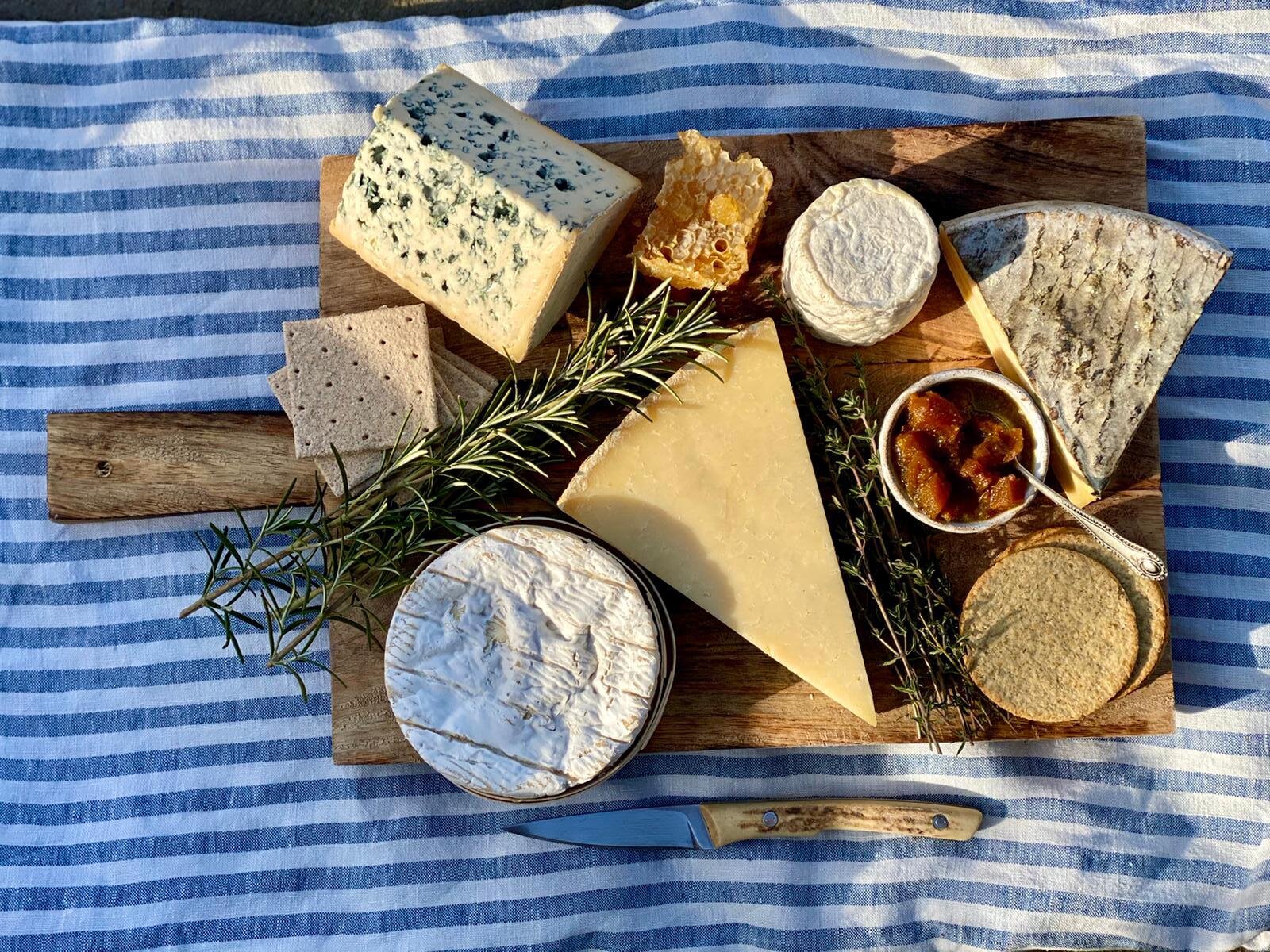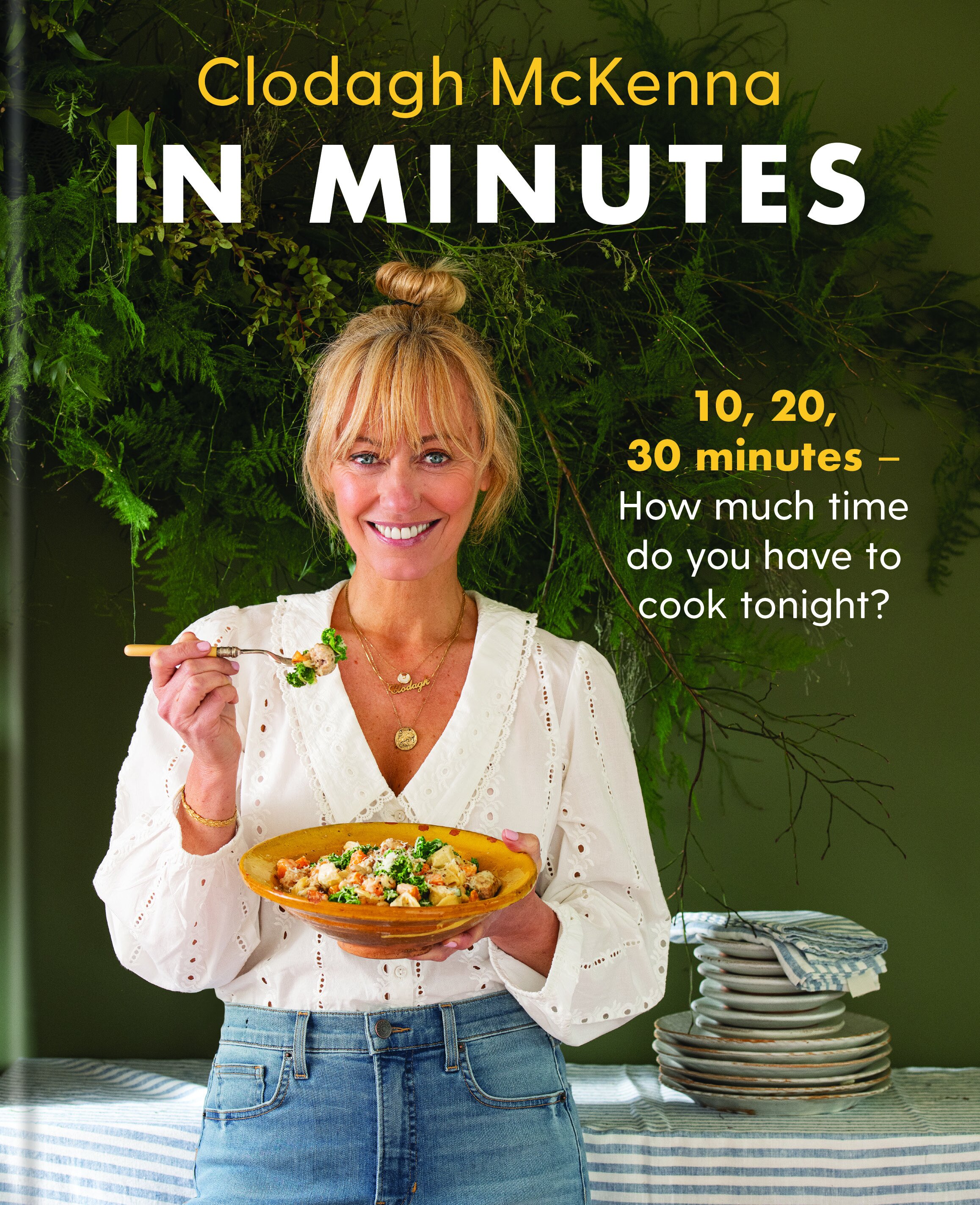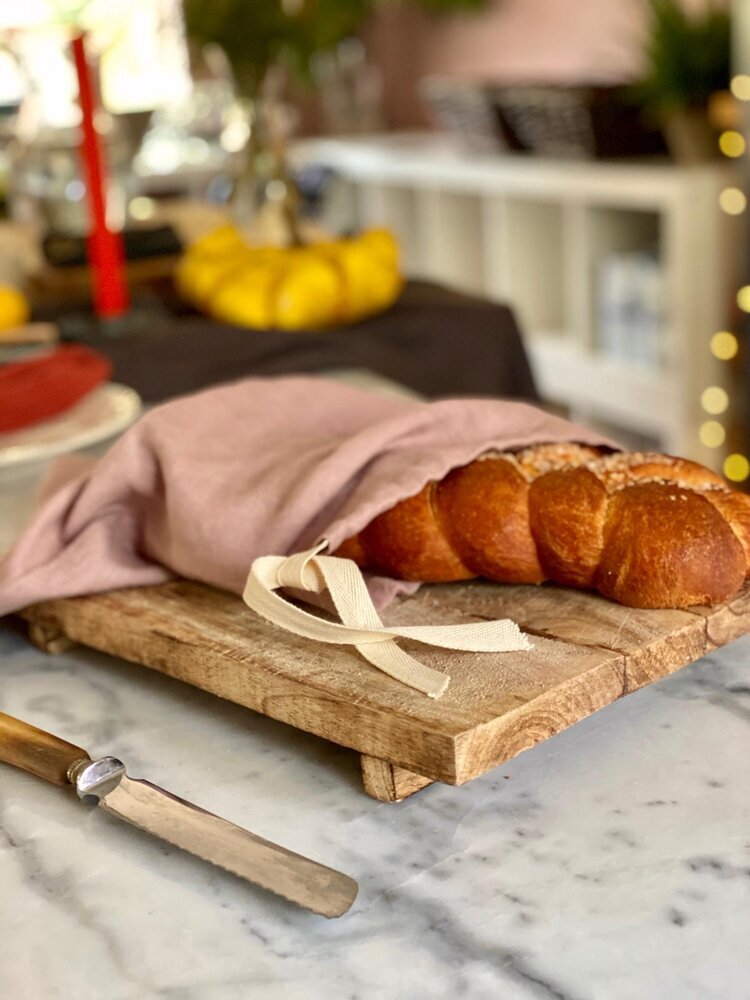The Classic French Cheese Board
Here is my list of a selection great farmhouse cheese to create the perfect French cheese board. Served on a wooden board or marble platter with crackers, I especially love those thin crisp sourdough ones, you could also have warmed baguette or oatcakes. A bunch of grapes or thin slices of apples are great for cleansing he palette. Apple chutneys, fig jams, jams, and honey are always delicious with cheeses. Make sure you take your cheese out of the fridge at least an hour before serving so they warm up and you get the best flavour.
CHABICHOU | Poitou-Charentes, Goat, Unpasteurised
A soft, fresh tasting cheese, shaped like a gently tapered cylinder. The texture is smooth yet quite close-textured. Produced traditionally with a lovely aromatic rind. It can be eaten young and fresh, however it reaches its ideal state – sweeter and crumblier – as it matures and dries out.
SAINT NECTARE | Auvergne, Cow, Pasteurised
A semi-soft cheese with a dimpled russet rind, speckled with grey velvety moulds inherent in the high humidity maturing rooms. The pate is soft and golden and the aroma reminiscent of earthy wild mushrooms. Matured on straw mats in the traditional style, this cheese has a huge range of flavours – depending on age – from light and milky to rich and minerally, with undertones of snap peas.
SALERS DESTIVE | Auvergne, Cow, Unpasteurised
A semi-hard uncooked pressed cheese with a dry natural rind scattered with red and orange patches. The pate is a rich golden colour. Made by one of only several remaining producers in extremely small batches in wooden vats, this a farmhouse cheese in the truest sense. The cows of the Salers breed must have their calfs present to give milk, further complicating (and simultaneously making more exemplary) the process. We select cheeses which are matured in stone cellars to give maximum taste and aroma to the finished cheese. With notes ranging from game to dark berries to summer pasture, the flavours can become very complex. Best season mid-July to December.
CAMEMBERT DE NORMANDY | Normandy, Cow, Unpasteurised
A traditional farmhouse-made cheese with a soft, supple texture and bloomy white rind, tinged with rust, which denotes its maturation on straw. Best eaten when moist and not too melting. Aromas are fruity – like poached apples or pears – with a deep, soothing earthiness on the palate. Pairs fantastically with beers and ciders of the region.
FOURME DAMBERT | Auvergne, Cow, Pasteurised
Known as the 'connoisseur’s blue cheese.' Capsule-shaped, patched with grey/white moulds on a natural thin rind. The interior is cream-coloured with smooth even marbling which never dominates the flavour. The texture is rich and mellow with a nutty subtle flavour, making it a perfect partner for fine wines as the taste is not overly aggressive.







